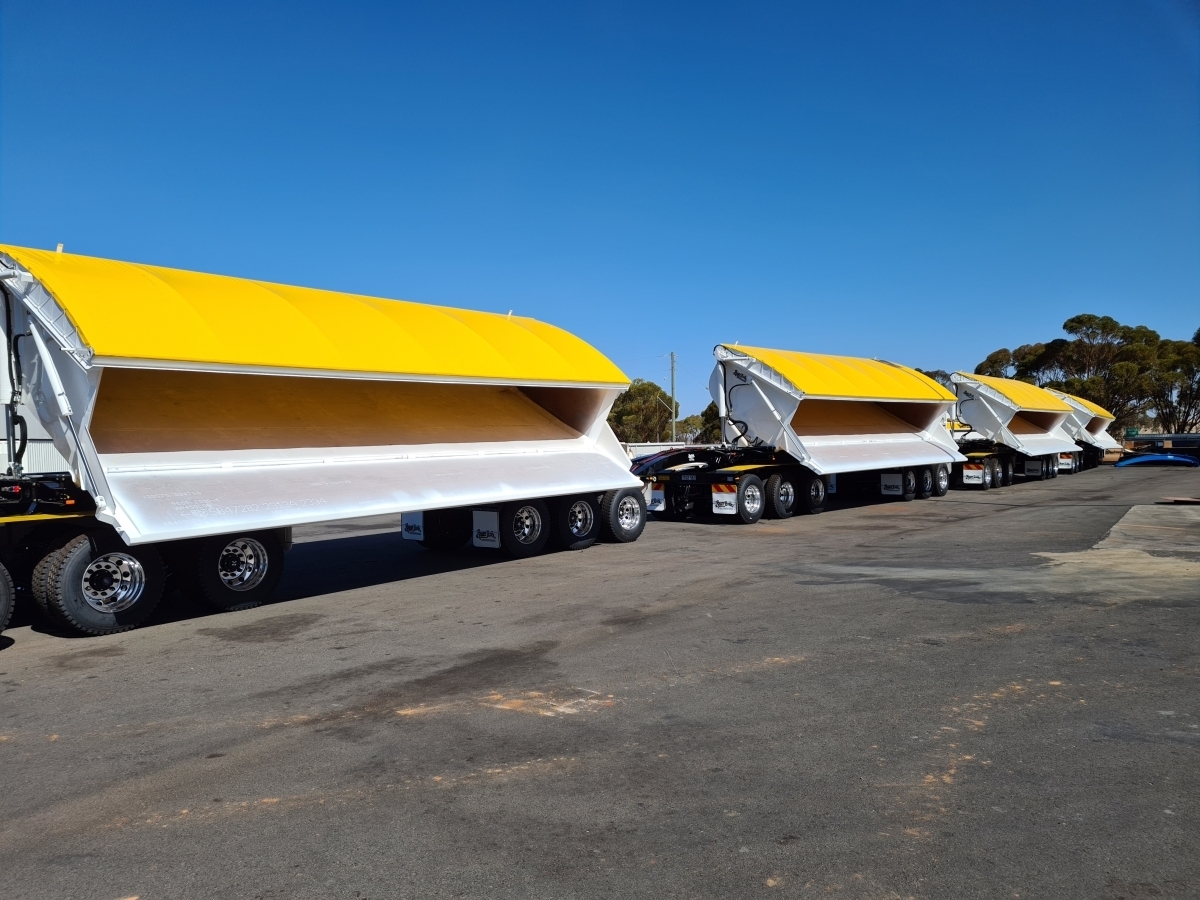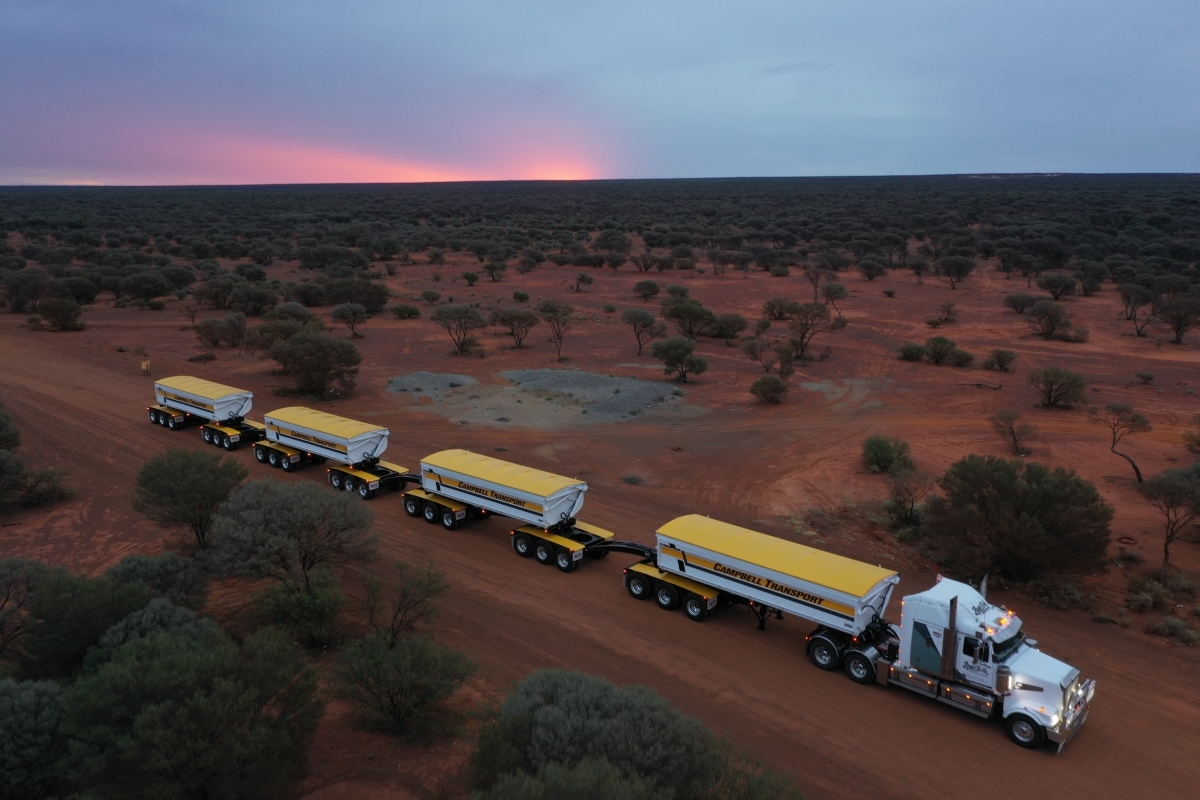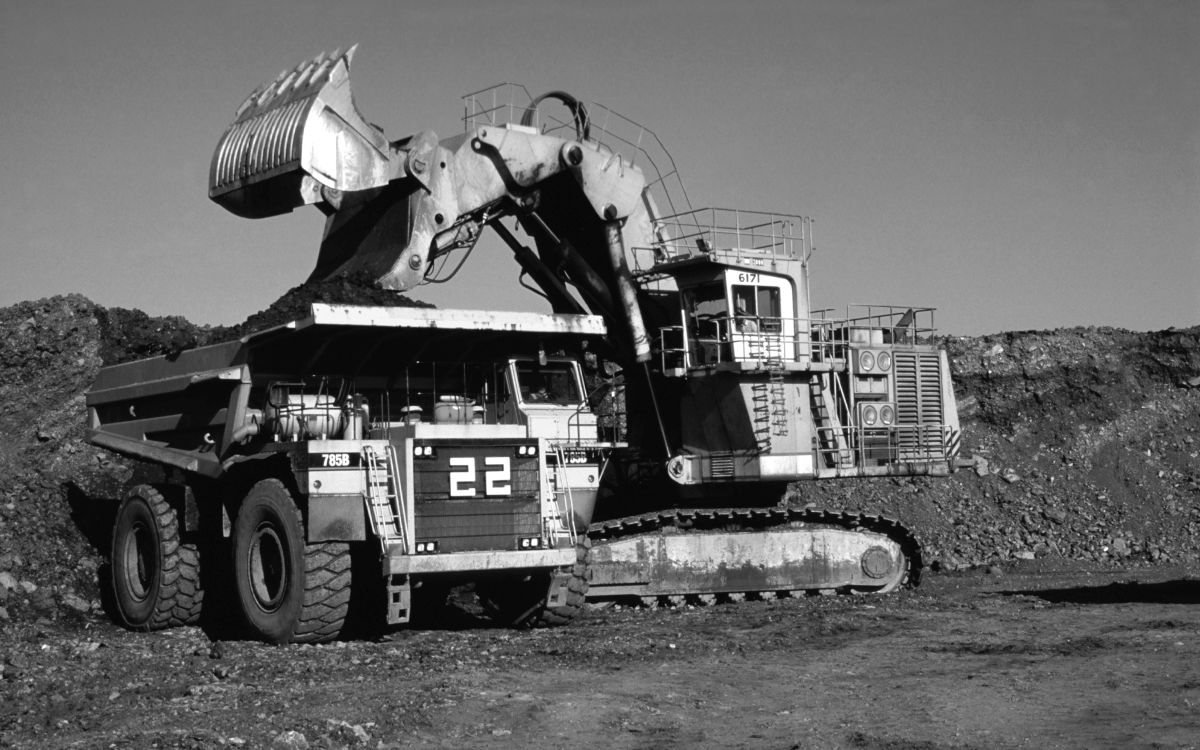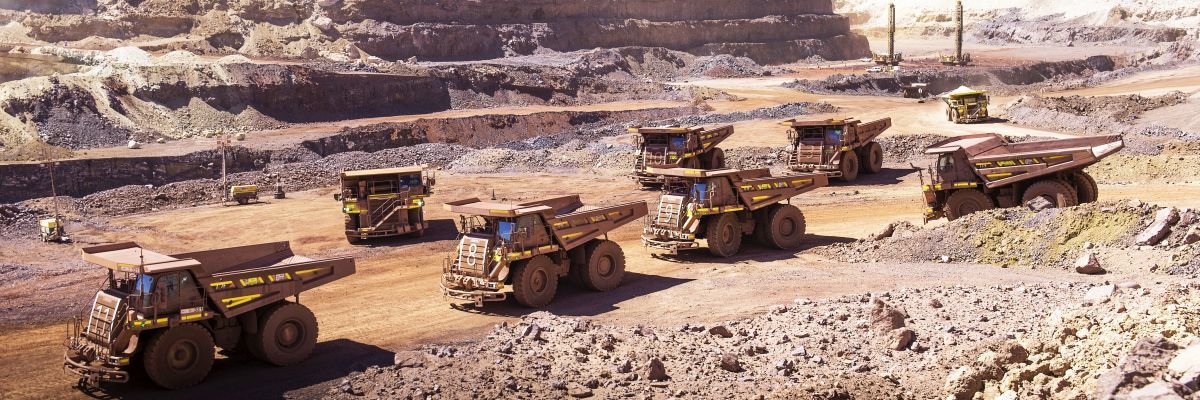How Australian dump body manufacturer Bruce Rock minimizes corrosive wear in ore transport
13.05.2025Hauling ore in hot and humid climates can have a devastating effect on the abrasion resistance of conventional abrasion-resistant steels. Bruce Rock Engineering in Australia was familiar with the challenges facing their mining trailer bodies transporting iron ore in Western Australia.
 Iron ore can be aggressive to steel in conditions with humidity and heat. Hardox® HiAce is a wear steel developed by SSAB to withstand corrosive wear from acidic and low pH loads
Iron ore can be aggressive to steel in conditions with humidity and heat. Hardox® HiAce is a wear steel developed by SSAB to withstand corrosive wear from acidic and low pH loads
© SSAB
The root of the problem
Iron ore contains small amounts of acidic salts. To suppress dust during transport, the ore is often sprayed with water. Salt and water are not a great combination in itself, and together with temperatures that often reach 45°C in this region, a corrosive environment is created. This leads to iron oxides forming on the steel’s surface, making it much more susceptible to abrasive wear.
The same corrosive wear phenomenon occurs with other minerals, such as lithium, nickel, copper concentrate and coal. Even in dry or non-corrosive conditions, a conventional AR steel will wear faster when handling loads that are acidic due to their low pH level or loads that contain chlorides or sulfates. And such loads are common in both surface and underground mining.
 Transporting iron ore from Western Australia is a 24/7 operation, and Hardox® HiAce helps keep the road trains from Bruce Rock Engineering moving without unnecessary maintenance stops
Transporting iron ore from Western Australia is a 24/7 operation, and Hardox® HiAce helps keep the road trains from Bruce Rock Engineering moving without unnecessary maintenance stops
© SSAB
The solution for Bruce Rock
Bruce Rock Engineering is a family-run business in Western Australia, home to some of the world’s largest iron ore mines. Bruce Rock offers a variety of transport solutions and prides itself on providing equipment with the lightest tare weights in Australia, aiming to maximize clients’ profits while minimizing maintenance and operating costs.
Since the company’s inception, Bruce Rock has been building dump bodies in Hardox® wear plate. Hardox® 450 has been their steel of choice for many years. A few years ago, SSAB approached them with a suggestion to try the new abrasion-resistant wear steel grade developed for acidic and corrosive environments.
This steel – Hardox® HiAce – can resist corrosive wear and therefore can give the equipment a substantially longer service life by suppressing the formation of less resistant oxides on the steel surface. Hardox® HiAce has been developed with a nominal hardness of 450 HBW, the same as for Hardox® 450. The research shows that in corrosive environments, the service life can be increased by 2 to 3 times with Hardox® HiAce compared to a 450 HBW steel.
Bruce Rock went onboard
One of their hauling trucks is the 60-m Super Quad road train with a payload up to 141 metric tons – four trailers pulled by a powerful truck traveling vast distances on dirt roads 24/7. They decided their first trial would be the bodies for the Super Quad. Bruce Rock upgraded from Hardox® 450 to Hardox® HiAce in the floor plates and the sides. “We never hesitated for a minute before introducing Hardox® HiAce into a Super Quad mining trailer combination,” says Brenton Verhoogt, operations manager at Bruce Rock Engineering. “When SSAB develops a new product, we know it’s been tested thoroughly before being launched. We were absolutely confident it would perform as Hardox® 450, with the added benefit of being corrosion resistant.”
The simple answer is: It depends. But that doesn’t give you much guidance when you are deciding which wear-resistant steel to choose that will optimize productivity and longevity for the wear parts in your equipment. To start, you should evaluate the abrasive materials you’re working with. Common materials include crushed granite, copper ore, iron ore, limestone and coal, ranked based on their relative hardness. Next, you’ll want to determine the desired maintenance interval to minimize downtime for the entire operation.
Looking at a typical mining site, wear steel is used as liners in hoppers, feeders and chutes, as well as for hammers in crushers or in screens for sorting. Hardox® 600 is a wear steel that performs well across a surprisingly wide range of abrasive materials, operating requirements and types of equipment.
Hardox® HiAce properties
A selection of Hardox® HiAce specifications:
- Typical impact toughness 50 J at -40°C
- Thickness range 3 to 100 mm
- Excellent workshop properties




